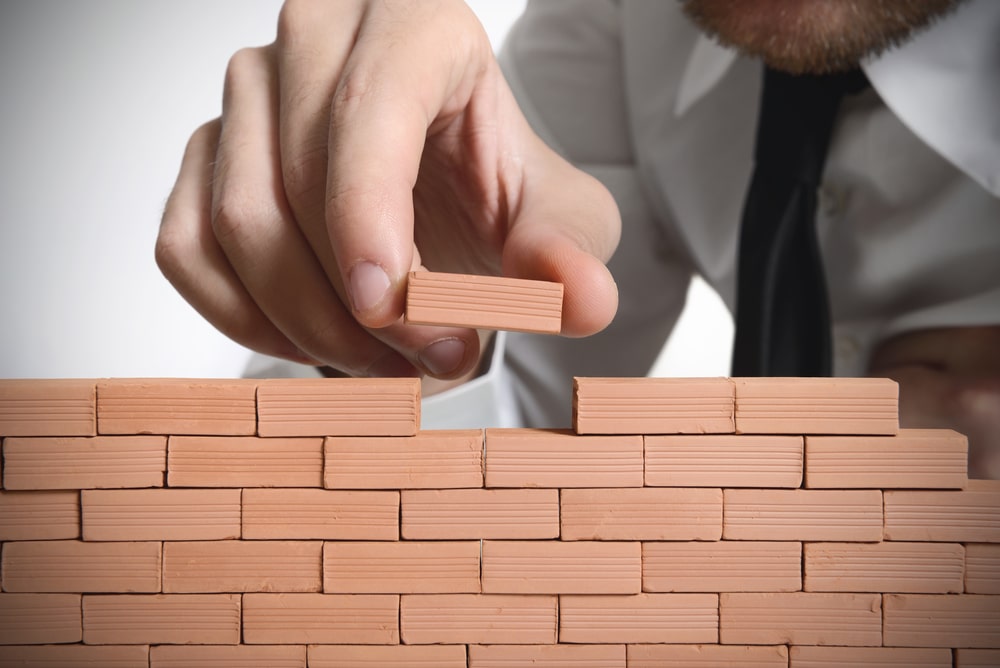No matter what type of business you plan to start, you must find the perfect property for your upcoming business operations and requirements. It’s not enough to find any building you can afford; you need the right building in the right place at the right price tag. Since it’s usually wiser to purchase business space tailored precisely for your enterprise’s requirements, you’ll want to pursue a build-to-suit lease rather than a normal commercial real estate contract.
Many people don’t know what a build-to-suit is, let alone how they can acquire one. But by understanding all the elements of build-to-suit leases, you’ll be able to significantly boost your business’s effectiveness, profit margins, and even your customers’ experiences. This article will break down everything you need to know about build-to-suit leases, including how they work and how you can acquire one.
What is a Build-to-Suit Lease?
A build-to-suit lease is a real estate agreement between a developer and landlord to construct and later lease a commercial building that meets specific and/or unique tenant needs. For example, if a business owner needs a specific building constructed for their upcoming business venture, they may choose to sign a build-to-suit lease with a developer. The developer will then build the commercial real estate property to the entrepreneur’s specifications and include special building elements or design choices to accommodate their requirements.
To ensure that a developer will not be left hanging after an expensive construction project, build-to-suit leases typically include a contractual obligation requiring the lessor to lease the property when construction ends. The developer then becomes the landlord and receives rent payments for a specified time, typically between 10 and 20 years. In this way, build-to-suit leases are unique in that developers don’t construct buildings with the intent to sell them after construction is finished. Business owners can be sued or face legal liability if they fail to follow their end of the agreement.
[ Thinking about investing in real estate? Register to attend a FREE online real estate class and learn how to get started investing in real estate. ]

Who Benefits from a Build-to-Suit Lease Agreement?
The benefits of build-to-suit lease agreements are simple: business owners can incorporate special or difficult-to-find elements into a future building to better serve their commercial ventures. For instance, if an entrepreneur needs a new type of building with extra space for showcasing custom-built motorcycles, a build-to-suit lease agreement could allow them to get exactly the building they need rather than having to compromise by choosing from available commercial properties.
Developers benefit from build-to-suit lease agreements since they receive consistent, reliable income from the lessor. They don’t have to wait for someone to buy the property they’ve constructed. The security of a build-to-suit contract ensures that business owners are not easily able to back out of the lease if they change their minds later. Both parties can potentially benefit from build-to-suit leases due to several advantages. For example, businesses that make lease payments on build-to-suit leases enjoy 100% tax deductibility for those payments. Additionally, it’s often more affordable for businesses to develop a customized property without owning it for decades. Business owners can use the money they save from leasing a build-to-suit property for other things since they don’t have to buy a commercial building outright. Some tenants that might find build-to-suit leases beneficial include:
-
Tenants who need to lower their rental/mortgage rates
-
Business owners who want to use some of their seed capital for other investments
-
Entrepreneurs who have very specific operating needs that are difficult to find in other commercial spaces
-
Tenants who need tax benefits since the rental payments for a build-to-suit building are tax-deductible
-
Develops who would prefer stable rental income from long-term clients
-
Developers who wish to diversify their portfolios
How Does a Build-to-Suit Contract Work?
A build-to-suit contract is just as complex as other lease agreements, and it involves a variety of logistics and negotiations before either party will be willing to sign. It’s never a good idea to rush into a rental agreement no matter what, but especially for commercial real estate properties. Let’s break down the most important components of a typical build-to-suit lease.
Signing Parties
These are simply the involved parties of the contract, like the tenant, landlord, tenant contacts, guarantor, and more.
Renewal Options
This section of the contract gives the tenant the option to renew or extend the lease agreement beyond the initial terms. Note that this is not an obligation, however.
Detailed Premises Description
This is a detailed and legally relevant description of the property to be constructed, including its boundaries, inclusions and specifically requested features, and more.
Lease Terms
These are the specific terms of the lease, such as the period of time through which the lessor must make on-time and regular rental payments.
Proposed Rent
This is how much rent the developer proposes to the lessor. The landlord always calculates the proposed rent in a build-to-suit lease.
Restrictions and Nature of Use
Some build-to-suit contracts include clauses that describe the nature of the building, what it is intended to be used for, and any restrictions for the building that may apply.
Taxes
A build-to-suit lease agreement will also include any tax payments made to the landlord or the taxing authority.
Maintenance and Repair
Most build-to-suit leases put the burden of maintenance tasks and repair or replacement of the property on the tenant.
Plans and Approvals
Most build-to-suit leases also include a breakdown of specific building plans and specifications so that both parties know what is intended to be built.
While the above elements are some of the most important in a typical build-to-suit lease, there are many more you should familiarize yourself with before signing any of these contracts.

What Types of Build-to-Suit Leases Exist?
Build-to-suit leases exist in a variety of forms to better suit different business owners or developer limitations. Let’s explore the different types of build-to-suit leases you might encounter or pursue.
Single Net Lease
Single net leases (N) require the tenant to pay rent plus a “pro-rate” share of the building’s total property taxes, as well as utilities and janitorial service costs. The landlord covers any other building expenses.
Double Net Lease
Double net leases (NN) require the tenant to pay property taxes and insurance premiums on top of their rental payments. The landlord pays for exterior and any common maintenance area costs (CAM charges).
Triple Net Lease
Triple net leases (NNN) require the tenant to pay for any expenses involved with operating the property, including rent, fixed and variable maintenance expenses, real estate taxes, building insurance, and much more. The landlord is only responsible for structural repair costs.
Absolute Net Lease
Absolute net leases are more rigid than the other lease types. Also called bondable leases, absolute net leases state that the tenant is responsible for any building expenses, including those related to repairing or maintaining the property’s structure and roof.
Reverse Build-to-Suit Lease
Reverse build-to-suit leases are drawn up when the tenant acts as the developer. In these cases, tenants construct buildings upon approval from the landlord while on the landlord’s dime. This type of lease is typically pursued when a tenant has their own real estate or construction company but would prefer to lease the property instead of own it after it is constructed.
Summary
Build-to-suit leases are unique real estate contracts that allow business owners to develop commercial properties that perfectly suit their needs. In exchange, they lease the completed property from the developer who built the real estate, paying them rent over 10 to 20 years.
All real estate investors should understand the ideal opportunities for a build-to-suit lease thanks to their benefits to developers and future tenants.
Ready to start taking advantage of the current opportunities in the real estate market?
Click the banner below to take a 90-minute online training class and get started learning how to invest in today’s real estate market!


